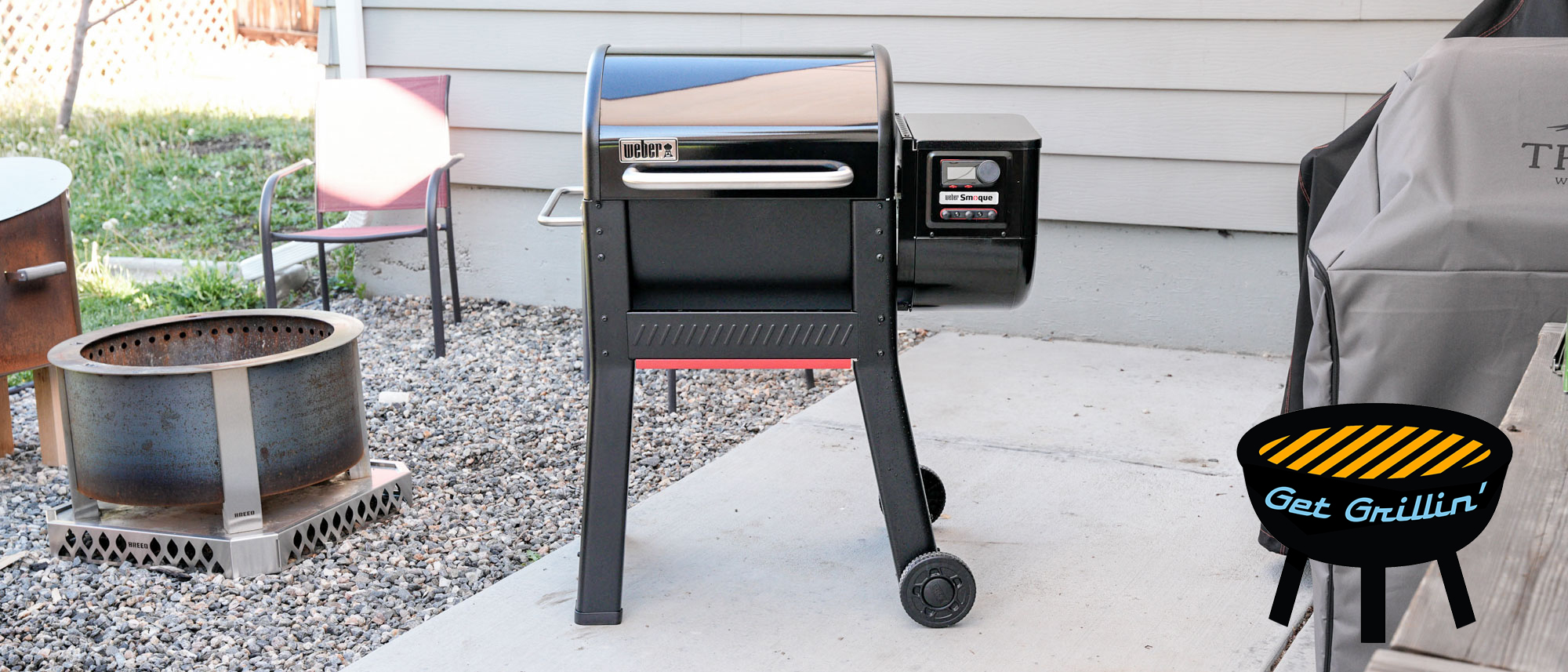Tom's Guide Verdict
A compact grill and smoker that doesn’t take up a lot of space but still delivers a big cooking area, the Smoque operates best as a smoker but also does well as a grill. It’s well-sealed and efficient, and offers a low 180-degree minimum temperature for true low and slow cooking.
Pros
- +
Easy build and setup
- +
Consistent temperature
- +
180-degree minimum temp makes it ideal for low and slow smoking
- +
Gets up to temperature quickly
Cons
- -
500 degree max temperature is a bit low for good searing
- -
No side prep table
- -
May be too small if you’re feeding big parties
Why you can trust Tom's Guide
Price: $799
Weight: 102 pounds
Cooking surface size: 594 square inches
Dimensions: 44.5 x 28.75 x 22.5 inches
Weber has built its name in the grilling world over the decades as a bastion of reliability, and the brand behind some of the best grills on the market. And the Smoque is no exception: this pellet grill/smoker combo does everything you need it to do, simply and intuitively, with quality results and a small footprint that won’t take up your entire patio.
For Tom's Guide Get Grillin' Week, I've been testing this new, mid-priced offering from the titans of grilling, and I’ve largely enjoyed my time using the Smoque. The food it has produced has come out with a subtle smoky flavor and even, consistent results. It suffers from the same drawback that most pellet smokers do: It doesn’t get quite hot enough for a really good sear, and while the smoky flavor is noticeable, it’s certainly not as strong as a charcoal or wood option.
Still, for reliably good results, a set-it-and-forget-it cooking process, and a small footprint with a high quality build, the Smoque delivers a lot of value.
Weber Smoque review: Price and availability

The Weber Smoque costs $799 and is available for purchase on Weber’s website. It comes with a 5-year warranty and free shipping. You can also add on-site assembly at checkout for an additional $99.
The Smoque is also available through other retailers. Weber provides a dealer locator on its website so you can find a store to shop in person.
Weber Smoque review: Design
The Smoque has a small footprint, despite offering an ample 594 square inches of cooking surface. That’s great if you’re short on space on your patio or just don’t want the hassle of a large pellet grill.
It took me less than an hour to build the Smoque, and the instructions were pretty clear and easy to follow. It was easily one of the quicker grill builds I’ve done.
Get instant access to breaking news, the hottest reviews, great deals and helpful tips.
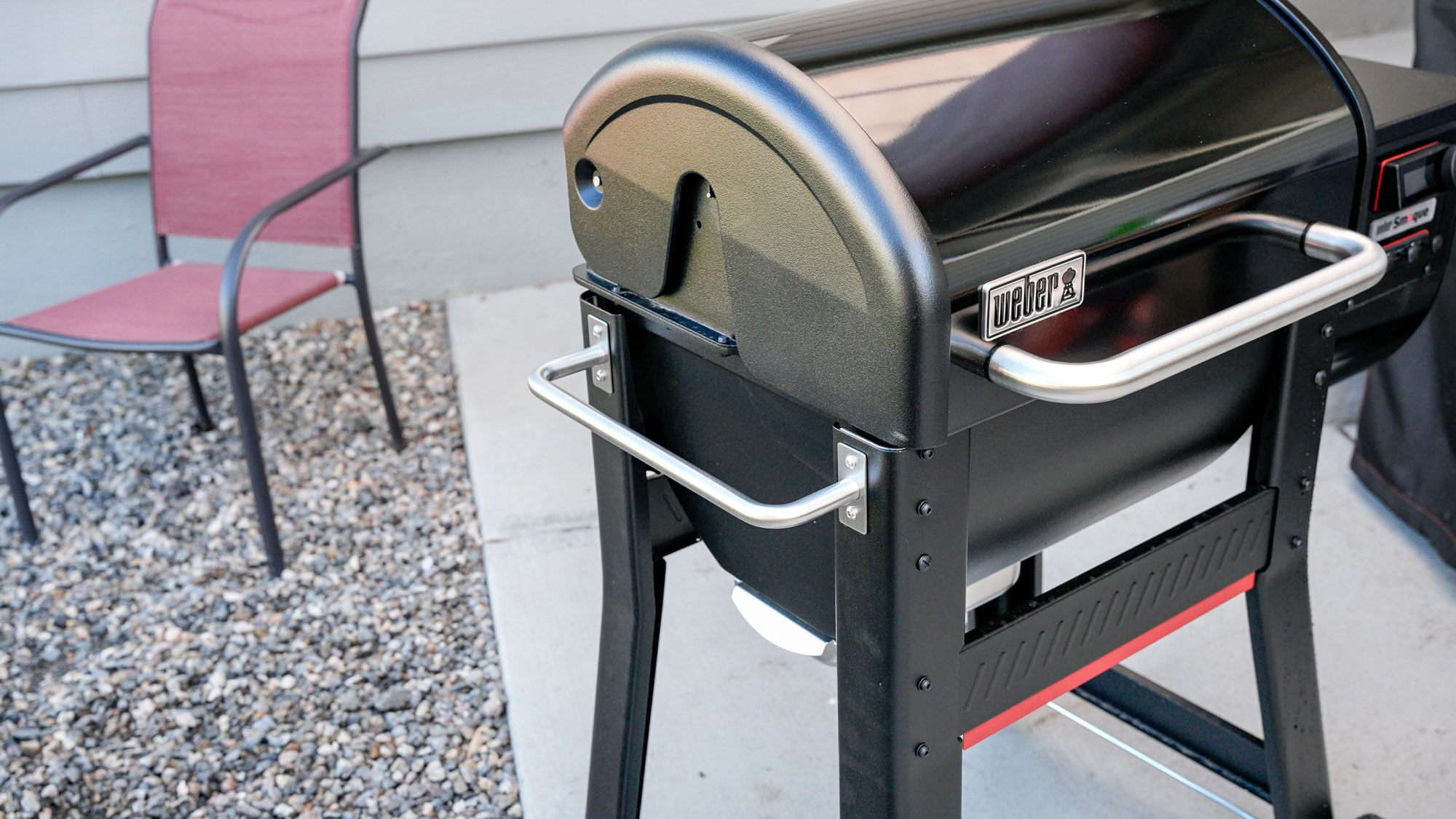
The finished product feels high-quality and well-made. Like most pellet grills out there, the pellet hopper lives on the side of the main cooking body. At its bottom, an auger runs horizontally to guide pellets from the hopper to the combustion area, where they will burn to create heat and smoke.
Notably, the utensil hooks are built into the face of the hopper, where you’ll also find the Weber Connect Digital LCD controller. On the other side where you’d usually find a prep table, Weber has instead affixed a handle to make it easier to move the unit around.

That system is very easy to use. Just plug in the unit, set your desired temperature, and the grill does the rest. This is also where you’ll plug in the two included food probes, which will give you a live reading of your food’s internal temperature as you cook.
Weber also includes what it calls the Rapid React PID, which essentially monitors the grill’s temperature and gets it up to temperature in 15 minutes or less after initial startup. This system is also responsible for getting the grill back up to temperature after you have opened the lid to tend to your food.
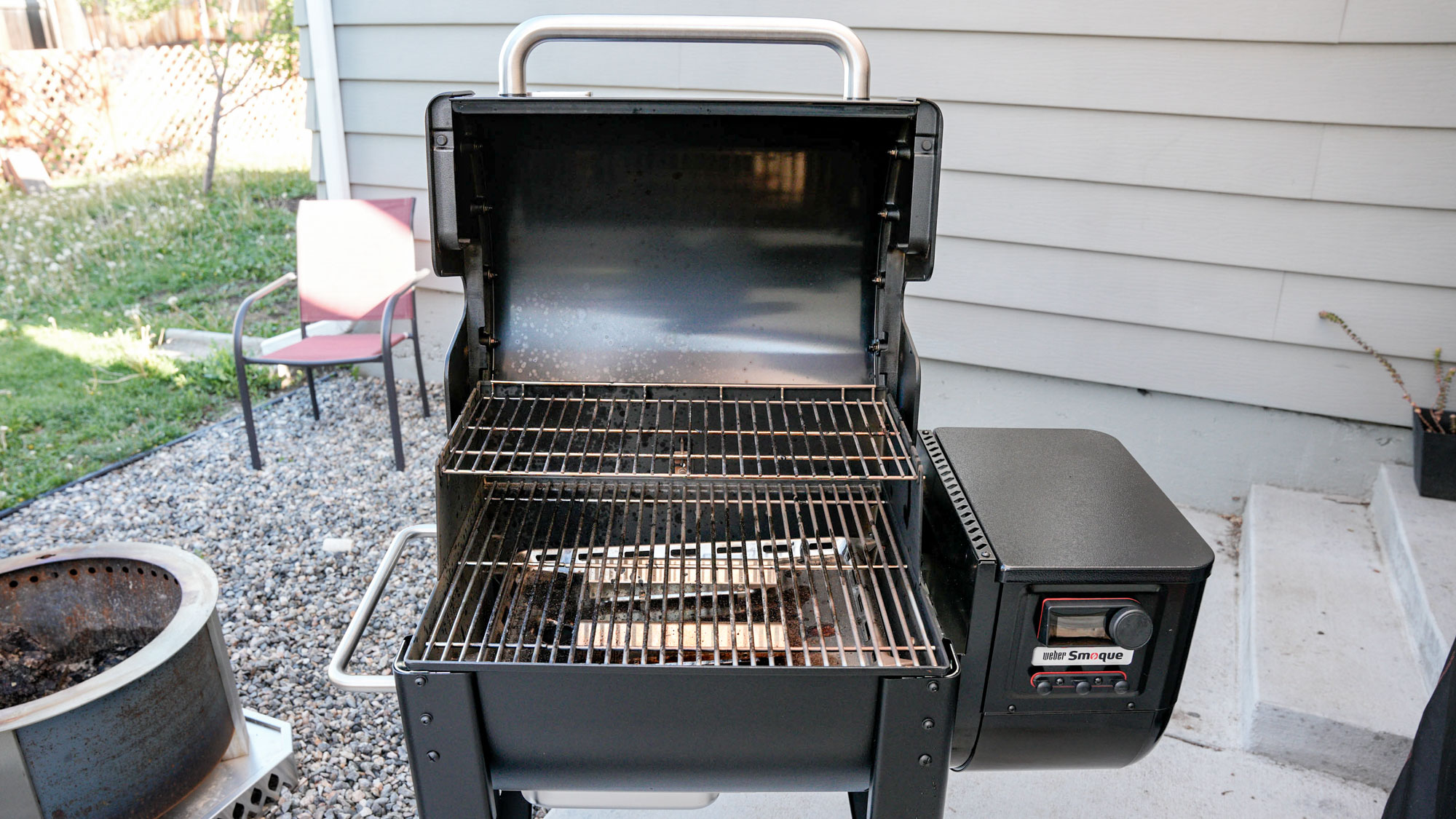
Weber’s SmoqueVent system is a design feature that circulates smoke around your food as it cooks. Weber says this lends a deeper flavor to your food, and encourages browning of meats — again, to lend more depth to your food’s flavor, and to help develop a bark on smoked meats.
An internal panel beneath the cooking grates sits at an angle and has a hole on one end. This allows greases and debris to flow downward into the hole, where it’s caught by a grease trap that mounts to the underside of the cooking chamber.
At low temperatures, the Smokeboost feature can be used, which helps maintain ideal temperature for as much smoke absorption as possible.
Notably, there are no prep tables on the front or side of the Smoque, nor is there a storage shelf beneath the cooking area. These are available as additional accessories.
Weber Smoque review: Smoking performance
I immediately liked the Weber for smaller smoking sessions, due in part to its smaller size. But more importantly, Weber allows you to set the Smoque as low as 180 degrees, which really makes it possible to do low and slow cooking. Some of the Weber’s closest competitors set the minimum temperature at 200 degrees. That’s okay, but for real low and slow cooking, 180 degrees is a sweet spot.
At that lower temperature, you can use the Smokeboost feature, which monitors the temperature inside the cooking chamber and maintains it for optimal smoke absorption. I used this feature during my first smoking session to get as much of a smoky flavor as possible.

During my first use, I seasoned the grill for an hour at high temperature. This burns off any chemicals or debris from shipping and ensures you don’t get any foreign flavors in your food while grilling or smoking.
I then smoked chicken thighs for three hours at 180 degrees, using the Smokeboost feature. I chose the largest and smallest thighs for my probes and monitored those temperatures via the Weber app.
Within that app, you can set the probes for specific recipes, and the app will walk you though the correct process. In this instance, I simply chose the chicken setting and waited for the thighs to hit a target temperature.
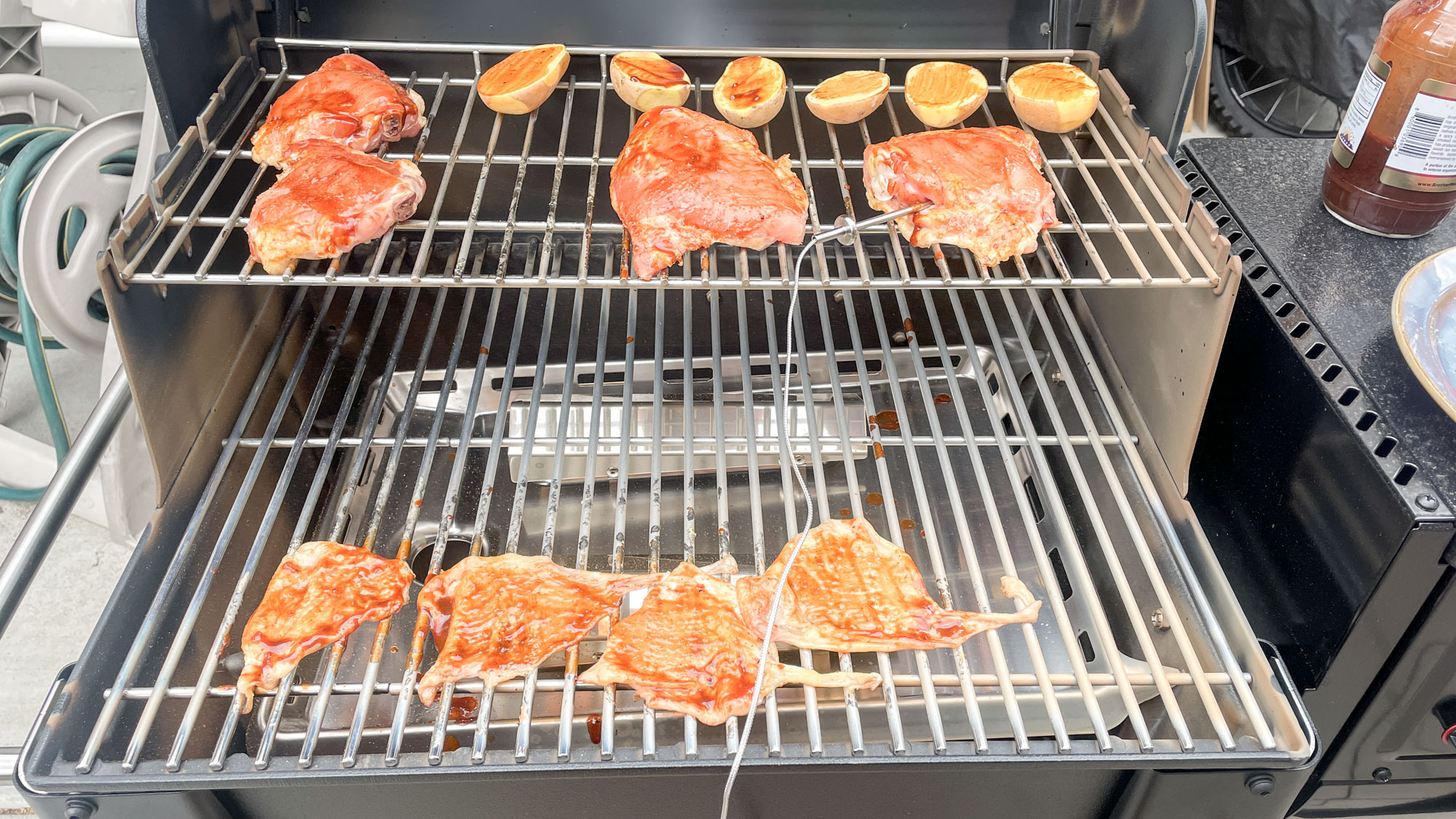

Throughout those three hours, I did open the lid occasionally to mop the chicken with barbecue sauce. It was remarkable how quickly the Smoque gets back up to the set temperature once you re-close the lid. This lends more consistency to your cooking.
It’s a very easy, set-it-and-forget-it operation. If I hadn’t spent some time mopping with barbecue sauce, I could have simply walked away for three hours and come back to take the chicken off the grill when they were cooked. It’s really that easy.
That said, the Smoque does suffer from the same problem pretty much every pellet smoker I’ve used has. While the chicken ended up with a slightly smoky flavor, I certainly wouldn’t call it a champion barbecue smoky flavor. It’s subtle, and while the chicken came out delicious, if you’re after a truly deep, smoky flavor, I find that charcoal or wood-burning smokers still reign supreme here.
Weber Smoque review: Grilling performance
For my next session with the Weber Smoque, I tried my hand at cooking a New York strip steak and some mixed vegetables.
Once again, the Smoque got up to temperature quickly — in this case, the maximum 500 degrees. I would have liked to get the grill up to 550 degrees, and the recipe the app called for even notes a 550-degree cooking temperature. But the Smoque does not allow you to get the grill that hot.
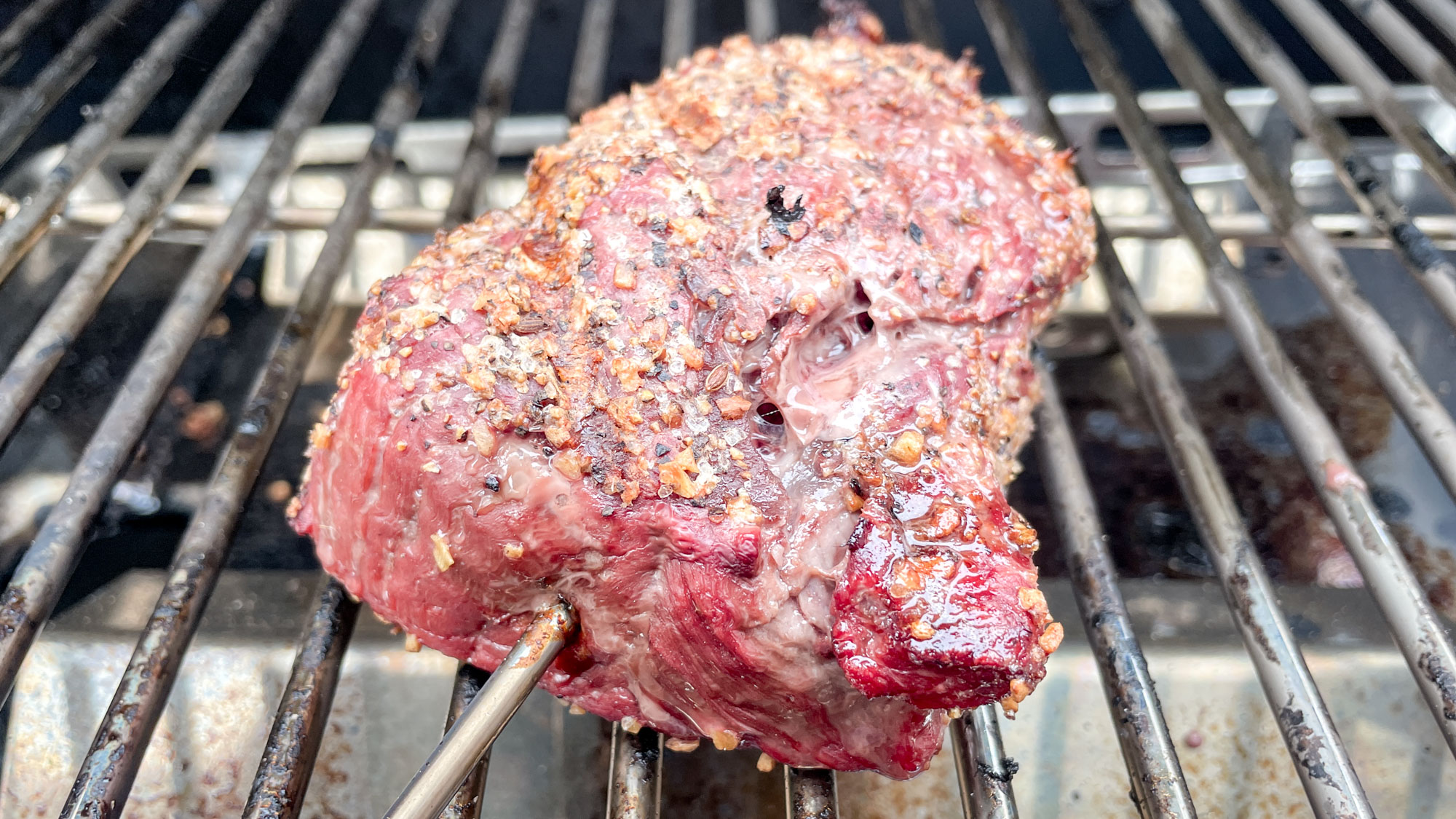
This time, I used the app’s recipe, which loads automatically and walks you through each step, from prepping the meat to cooking it through and letting it sit after grilling. It even tells you when to flip the steak.
Of course, the timing was a bit off because the recipe called for a higher temperature than the grill can manage, so I still had to monitor the internal temperature of the meat to ensure I got the medium-rare finish I was looking for.
And I did indeed get a very good medium-rare steak, albeit with the very extreme edges of the steak slightly overcooked. As promised, the Smoque also delivered a nice browning around the edges, adding to the complexity of flavor.

That said, once again the Smoque stumbles where just about all pellet grills do. I wanted to do a reverse sear — that is, cook the steak to the desired temperature, then finish it with a high-heat sear, preferably in a pan or over a flame. I transferred the steak to the lower rack and tried to sear there, but the grill just doesn’t get hot enough to get a good sear here. I ended up taking it inside to sear on a cast-iron skillet.
One more notable feature of the Smoque: the smoke largely stays in the cooking chamber. A lot of smokers have gaps or openings, whether by design or by chance, that allows a lot of the smoke to escape during the cooking process. Not so with the Smoque. I was very pleased to see it is well-sealed and keeps the smoke in the chamber where it belongs.
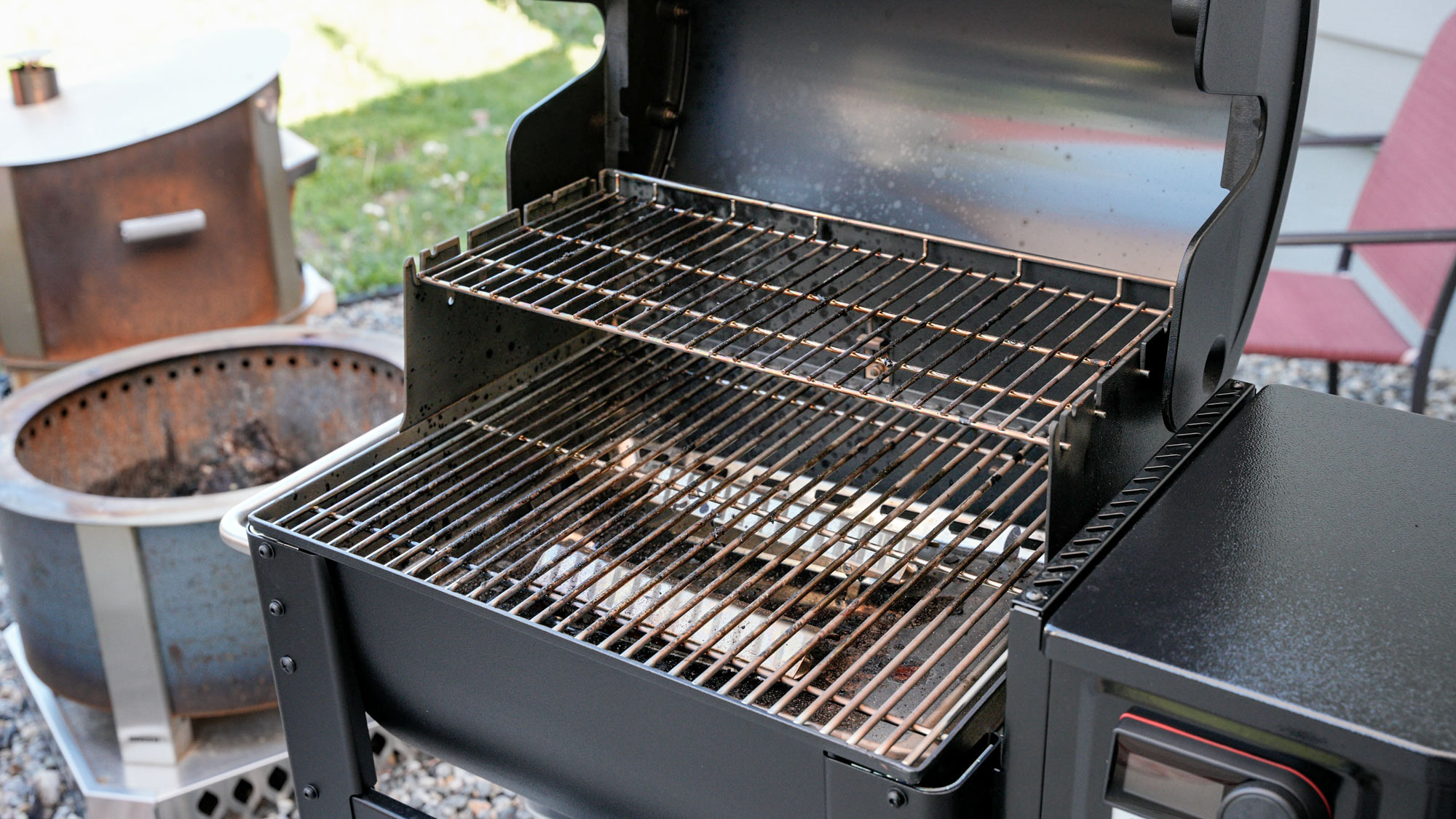
Weber Smoque review: App
The Weber Connect app is easy to use and connected quickly to my grill. It gives you the basics — controls for the grill itself, temperature charts to monitor both the cooking chamber and your meats in real time, timers, and access to the Smokeboost feature. You can also look up recipes and have the app walk you through the cooking process.
It’s clear Weber put some good effort into this app and it’s intuitive, user-friendly, and a great companion to the Smoque.
Weber Smoque review: Accessories
One of the bummers about the Smoque is the lack of a side table to prep foods before putting them on the grill. I had to put plates and cutting boards on the lid of the hopper instead. Fortunately, Weber does sell a Side Table for an additional $125, though it definitely feels like this should be included in the original purchase price.
The list of other accessories is quite extensive. Some of the most useful ones include:
- Weber Works Caddy with Tray Lid, $45
- Weber Works Flex Light, $45
- Weber Works Cutting Board and Basin, 445
- Weber Crafted Griddle, $100
- Weber Crafted Dual Sided Sear, $100
- Weber Crafted Pizza Stone, $100
- Weber Crafted Rotisserie Skewer Set, $65
- Folding front table, $75
- Bottom shelf, $70
How does it compare?
The pellet grill category is a crowded one. Fortunately for Weber, it floats close to the top of the category, with solid build quality, a great app, and some solid features that make cooking on it a breeze.
I would compare this to similarly-sized Traeger grills, which is another quality name in pellet grills/smokers. I recently tested the Woodridge Pro from Traeger, which is much larger than the Smoque but similar in terms of performance. It costs $1,150 as compared to the Smoque’s $800, and the Traeger includes two side tables and more cooking surface area.
Otherwise, the performance of the two smokers is very comparable. It’s worth noting that the Smoque seems to be sealed better, keeping more smoke within the cooking chamber.
Weber Smoque review: Verdict

The Smoque is a well-built and easy-to-use option for nightly grilling or weekend smoking. You can fit quite a lot of food on this compact grill, though if you’ll be feeding large parties frequently, the Smoque may be a bit small for you.
But its small stature is also one of its big benefits if you’re short on patio space. Despite its small footprint, it delivers plenty of food, a good smoky flavor (though not as much as wood or charcoal units), and a simple, set-it-and-forget-it cooking method. The app is solid too, and guides you through optimal cooking procedures for various foods you might be interested in grilling or smoking.
At this price, I do feel that the side table and bottom storage shelf should be included. But otherwise, I had no problems at all with the Smoque and find it very useful for small and medium-sized meals. It seals in smoke well, and goes down to 180 degrees for true low and slow cooking. I wish it got hotter than 500 degrees for better searing capabilities, but it’s a solid unit even without that max temperature.
More from Tom's Guide
- I smoked ribs and brisket on the Weber Searwood — here’s why it’s the perfect smoker for beginners
- Experts recommend using coffee to clean your grill — here's how to do it
- How to make the perfect smash burger on your flat top grill, according to a pro chef

Dan Cavallari is the former technical editor for VeloNews Magazine, who currently reviews electric bikes, bike lights, and other bike accessories for Tom's Guide. In addition to VeloNews, his work has appeared in Triathlete Magazine, Rouleur Magazine, CyclingTips.com, Road Bike Action, Mountain Bike Action, CycleVolta.com, Tomsguide.com, and much more. Dan also hosts two podcasts on his site, Slow Guy on the Fast Ride: One is about cycling and other outdoor activities, while the other looks at mental health issues. Most recently, Dan also covered the 2022 Tour de France. Dan lives outside of Denver, Colorado with his family.
You must confirm your public display name before commenting
Please logout and then login again, you will then be prompted to enter your display name.
